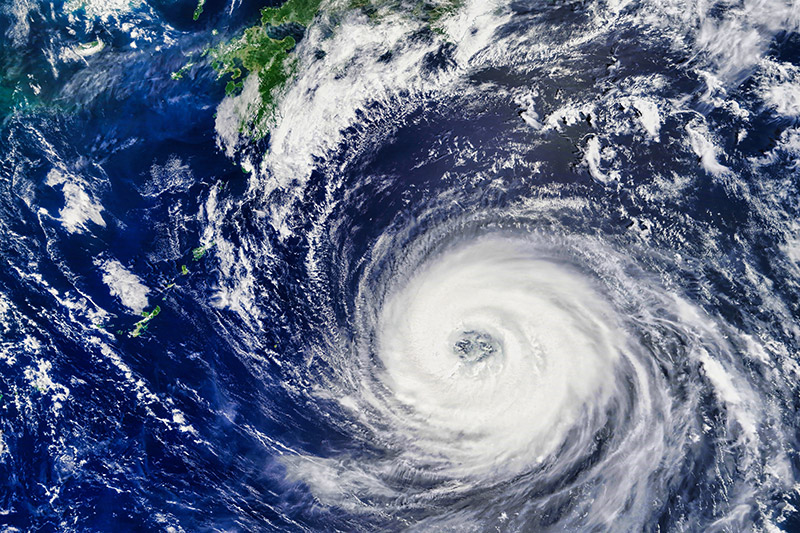Typhoon "Yagi" hit Northen Vietnam
Super Typhoon Yagi, the strongest storm to hit Asia this year, has claimed the lives of at least 59 people and left hundreds injured in northern Vietnam, according to local officials. The Ministry of Agriculture and Rural Development reported that 44 of the victims were killed in landslides. Although Yagi made landfall in Vietnam on Saturday (7th Sep 2024) and has since weakened to a tropical depression, authorities are cautioning about the potential for more flooding and landslides as the storm continues to move westward.
Sept 15th, VIETNAM – Tropical Storm No. 3 (3rd storm of the year) and subsequent floods have caused significant economic damage in Vietnam, with losses estimated at over VND 31,596 billion (approximately USD 1.3 billion). The hardest-hit areas include Quang Tri, Thua Thien Hue, and Quang Nam provinces, where agricultural lands, infrastructure, and homes have been severely impacted. Over 30,000 houses have been submerged, and thousands of hectares of crops have been destroyed. Immediate government assistance is being mobilized to support affected communities. The disaster highlights the urgent need for enhanced disaster preparedness and recovery strategies in these vulnerable regions.
Typhoon Season in Vietnam: How to Prepare Your Business
Typhoon season in Vietnam, typically lasting from June to November, can heavily impact business operations across the country. The recent Typhoon Yagi in Vietnam caused widespread disruptions, highlighting the need for preparedness. Understanding the risks and implementing a solid disaster preparedness plan can help safeguard your operations against potential damage caused by storms. This guide outlines the key strategies for protecting your business during Vietnam’s typhoon season.
When is Typhoon Season in Vietnam?
Typhoon season in Vietnam aligns with the broader typhoon season in Asia. The peak months are from August to October, but storms can occur as early as June. Typhoons in Vietnam primarily impact the central and northern regions, but southern areas can also experience heavy rains and flooding.
What Businesses Need to Know
Typhoons, known as “bão” in Vietnamese, bring strong winds, heavy rainfall, and storm surges, which can cause power outages, flooding, and infrastructure damage. In 2023 alone, several typhoons hit Vietnam, disrupting supply chains and damaging businesses.
Businesses in typhoon-prone regions like Vietnam must be prepared for the potential effects of strong storms. With typhoons such as Yagi and other historical storms hitting Vietnam, being proactive is essential. Being prepared can minimize operational losses and ensure business continuity.
How to Prepare Your Business for Typhoon Season
Here are key steps to prepare your business for typhoon season in Vietnam:
1. Assess Risks and Create a Disaster Plan
- Identify potential risks, such as flooding or damage to facilities.
- Develop a disaster preparedness plan that includes evacuation routes, backup power, and communication strategies.
2. Secure Physical Assets
- Strengthen your building structure by securing windows, doors, and roofs.
- Store valuable equipment and documents in waterproof containers or offsite locations.
3. Ensure Communication Readiness
- Set up communication channels to stay informed of storm warnings.
- Maintain contact with employees, suppliers, and customers to minimize disruptions.
4. Check Your Insurance Coverage Readiness
- Ensure your business insurance includes coverage for storm damage and flooding.
- Review your policy annually, particularly before the typhoon season in Vietnam begins.
Typhoon Preparedness Tips for Expats and Investors
During the typhoon season in Vietnam, particularly when typhoons like Yagi make landfall, it’s crucial for businesses to assess risks and secure assets.
Foreign business owners and expats in Vietnam should be aware of local weather patterns and government advisories during typhoon season. As Vietnam continues to attract international investors, understanding the risks posed by natural disasters like typhoons can be critical in safeguarding operations.
Insights from Typhoon Seasons Across Asia
Vietnam’s typhoon season is part of the larger Asia typhoon season, which affects countries like Thailand, Korea, and the Maldives. Businesses in these regions face similar challenges. For instance, Thailand’s hurricane season overlaps with Vietnam’s, and businesses in both countries can share strategies to minimize storm-related risks.
Conclusion
While typhoon season in Vietnam can be challenging, with the right preparation, businesses can mitigate risks and ensure continued operations. Whether you’re a local business owner or an international investor, staying informed and proactive is key to weathering the storm.
















